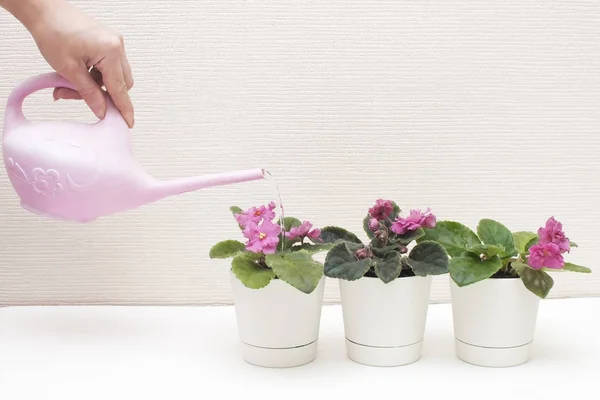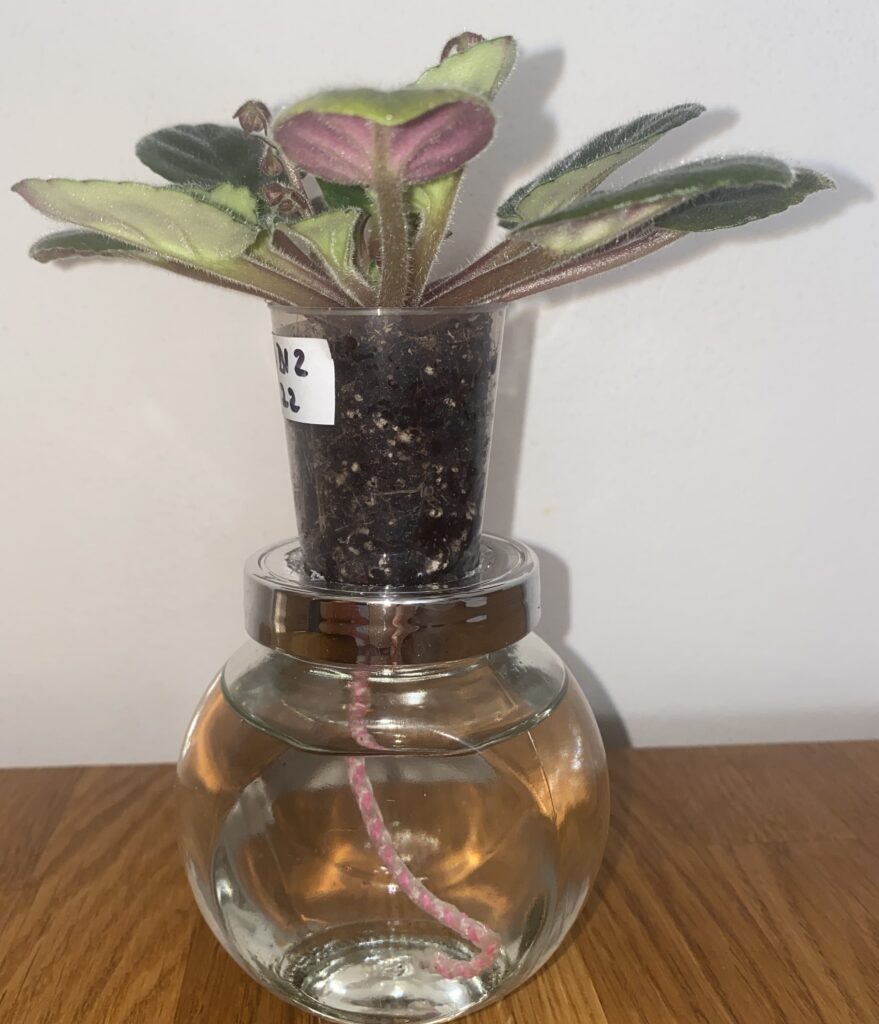Watering
Usually, it is enough to water your violets with tap water and, in my experience, it is also recommendable. Some growers choose distilled water or rainwater, but sometimes these are not the best choice, due to lack of magnesium and calcium. These elements are needed for a healthy development of violets, so in case you opt for these kinds of water, remember to make sure the fertilizer you use contains these minerals.
How frequently and how abundantly you need to water your violets depends on many factors, such as
- the dimension of the pot,
- the composition of the soil,
- the temperature of the air,
- the age of the plant.
Blooming violets will need more water than those without flowers. African violets do not like when the soil is completely dry, but also too much humidity can damage and rot their thin roots.

There are many ways of African violet watering. You can water them from the top or from the bottom directly in the saucer. But if you, like me, have a bigger collection, you will probably prefer the wick watering.
Wick watering
This is a method in which you put a wick (from man-made fibers) through a small hole in the bottom of the pot. The plant is then set above a reservoir of water and the bottom end of the wick is set in the water.
This method has many advantages:
- it is less time consuming because you only need to fill in the reservoir once (I do it usually once a week but it depends on many factors, like outside temperature or the capacity of the reservoir)
- the plants are watered more evenly, which result in more constant blooming and growing
- violets will be watered also while you are away from home

This method also has some disadvantages that you should be aware of:
- you must carefully choose a good, porous soil, which contains a generous amount of perlite (at least 50 %). Otherwise there is a risk that the soil will become too moist, and the thin violet roots will get rotten. Also, if the soil is too moist, mold might appear on the soil surface
- green algae will probably appear in the reservoir of the water. However, this is only an aesthetic issue, and causes no harm to your violets
- violets watered this way should be repotted more frequently (usually twice a year)